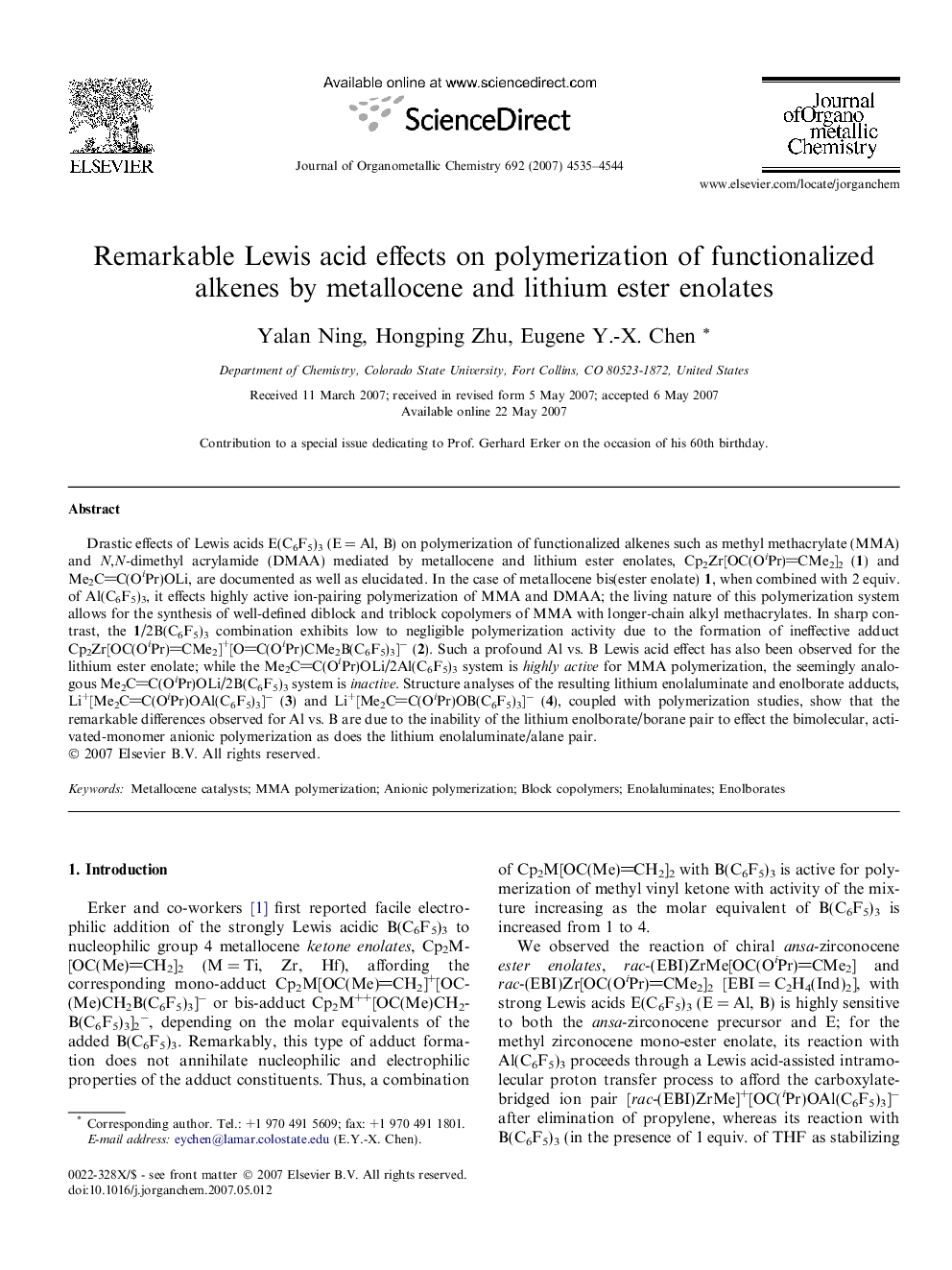| Article ID | Journal | Published Year | Pages | File Type |
|---|---|---|---|---|
| 1328207 | Journal of Organometallic Chemistry | 2007 | 10 Pages |
Drastic effects of Lewis acids E(C6F5)3 (E = Al, B) on polymerization of functionalized alkenes such as methyl methacrylate (MMA) and N,N-dimethyl acrylamide (DMAA) mediated by metallocene and lithium ester enolates, Cp2Zr[OC(OiPr)CMe2]2 (1) and Me2CC(OiPr)OLi, are documented as well as elucidated. In the case of metallocene bis(ester enolate) 1, when combined with 2 equiv. of Al(C6F5)3, it effects highly active ion-pairing polymerization of MMA and DMAA; the living nature of this polymerization system allows for the synthesis of well-defined diblock and triblock copolymers of MMA with longer-chain alkyl methacrylates. In sharp contrast, the 1/2B(C6F5)3 combination exhibits low to negligible polymerization activity due to the formation of ineffective adduct Cp2Zr[OC(OiPr)CMe2]+[OC(OiPr)CMe2B(C6F5)3]− (2). Such a profound Al vs. B Lewis acid effect has also been observed for the lithium ester enolate; while the Me2CC(OiPr)OLi/2Al(C6F5)3 system is highly active for MMA polymerization, the seemingly analogous Me2CC(OiPr)OLi/2B(C6F5)3 system is inactive. Structure analyses of the resulting lithium enolaluminate and enolborate adducts, Li+[Me2CC(OiPr)OAl(C6F5)3]− (3) and Li+[Me2CC(OiPr)OB(C6F5)3]− (4), coupled with polymerization studies, show that the remarkable differences observed for Al vs. B are due to the inability of the lithium enolborate/borane pair to effect the bimolecular, activated-monomer anionic polymerization as does the lithium enolaluminate/alane pair.
Graphical abstractDrastic Lewis acid effects on polymerization of functionalized alkenes mediated by metallocene and lithium ester enolates are observed as well as elucidated.Figure optionsDownload full-size imageDownload as PowerPoint slide
